Best Tools for Expanding Nested Dictionaries in Pandas to Buy in December 2025
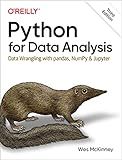
Python for Data Analysis: Data Wrangling with pandas, NumPy, and Jupyter


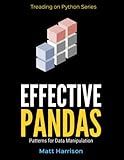
Effective Pandas: Patterns for Data Manipulation (Treading on Python)


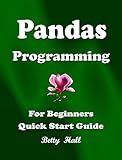
Pandas Programming Language, Pandas Quick Start Guide, Pandas Cookbook: For Beginners


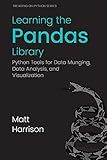
Learning the Pandas Library: Python Tools for Data Munging, Analysis, and Visualization (Treading on Python Book 12)


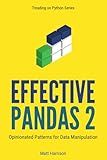
Effective Pandas 2: Opinionated Patterns for Data Manipulation (Treading on Python Book 4)


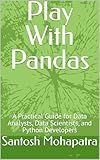
Play With Pandas : A Practical Guide for Data Analysts, Data Scientists, and Python Developers


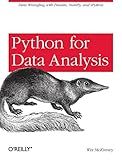
Python for Data Analysis: Data Wrangling with Pandas, NumPy, and IPython


To expand a nested dictionary in a pandas column, you can use the apply function along with lambda functions to iterate over the dictionary values and create new columns for each key. First, you need to convert the dictionary column into a DataFrame by calling the apply method on the column and passing a lambda function that converts the dictionary into a Series. Next, you can use the join method to join the new DataFrame with the original DataFrame based on the index. This will expand the nested dictionary into multiple columns in the pandas DataFrame. You can also use the json_normalize function from the pandas.io.json module to expand nested dictionaries into separate columns. This function automatically creates columns for nested keys and fills in missing values with NaN.
How to concatenate multiple nested dictionaries in pandas?
You can concatenate multiple nested dictionaries in pandas by converting them into DataFrames and then using the pd.concat() function.
Here is an example code snippet to concatenate two nested dictionaries:
import pandas as pd
Sample nested dictionaries
dict1 = {'A': {'a': 1, 'b': 2}, 'B': {'c': 3, 'd': 4}} dict2 = {'A': {'e': 5, 'f': 6}, 'B': {'g': 7, 'h': 8}}
Convert nested dictionaries to DataFrames
df1 = pd.DataFrame(dict1).T df2 = pd.DataFrame(dict2).T
Concatenate the DataFrames
result = pd.concat([df1, df2])
print(result)
This will output a concatenated DataFrame with the nested dictionaries combined.
How to handle missing values in a nested dictionary in pandas?
To handle missing values in a nested dictionary in pandas, you can use the fillna() method to fill in missing values with a specified value. Here is an example:
import pandas as pd
Nested dictionary with missing values
data = { 'A': {'a': 1, 'b': 2, 'c': None}, 'B': {'a': None, 'b': 5, 'c': 6}, 'C': {'a': 7, 'b': 8, 'c': 9} }
Create a DataFrame from the nested dictionary
df = pd.DataFrame(data)
Fill missing values with 0
df.fillna(0, inplace=True)
print(df)
This will output:
A B C
a 1.0 0.0 7 b 2.0 5.0 8 c 0.0 6.0 9
In this example, the fillna(0, inplace=True) method is used to fill missing values with 0 in the nested dictionary. You can replace 0 with any other value that you want to fill missing values with.
How to stack and unstack nested dictionaries in pandas for reshaping data?
To stack and unstack nested dictionaries in pandas for reshaping data, you can use the pd.DataFrame.from_dict function to convert the nested dictionary into a DataFrame, and then use the stack() and unstack() functions to reshape the data.
Here's an example:
import pandas as pd
Nested dictionary
data = { 'A': {'a': 1, 'b': 2, 'c': 3}, 'B': {'a': 4, 'b': 5, 'c': 6} }
Convert nested dictionary to DataFrame
df = pd.DataFrame.from_dict(data, orient='index')
Stack the DataFrame
stacked_df = df.stack()
Unstack the DataFrame
unstacked_df = stacked_df.unstack()
print(df) print(stacked_df) print(unstacked_df)
This will output:
a b c A 1 2 3 B 4 5 6
A a 1 b 2 c 3 B a 4 b 5 c 6 dtype: int64
a b c A 1 2 3 B 4 5 6
This example demonstrates how to stack and unstack nested dictionaries in pandas for reshaping data. You can further manipulate the data by using other pandas functions as needed.
What is the most efficient way to handle memory when working with nested dictionaries in pandas?
When working with nested dictionaries in pandas, the most efficient way to handle memory is to convert the nested dictionary into a pandas DataFrame. This can be done using the pd.DataFrame constructor, which allows you to convert a dictionary of dictionaries into a DataFrame. By doing this, you can take advantage of the efficient memory storage and operations that pandas provides for tabular data.
Alternatively, if you need to preserve the nested structure of the dictionary, you can use the pd.json_normalize function to flatten the nested dictionary into a DataFrame with a hierarchical index. This allows you to work with the data in a more structured manner while still preserving the nested relationships.
In general, it is recommended to convert nested dictionaries into DataFrame objects in pandas for efficient memory management and easier data manipulation.
How to convert a nested dictionary into a JSON object in pandas?
To convert a nested dictionary into a JSON object in pandas, you can use the json.dumps() function from the json module. Here’s an example code snippet demonstrating how to achieve this:
import pandas as pd import json
data = { 'key1': { 'nested_key1': 'value1', 'nested_key2': 'value2' }, 'key2': { 'nested_key1': 'value3', 'nested_key2': 'value4' } }
Convert nested dictionary to JSON object
json_obj = json.dumps(data)
Print JSON object
print(json_obj)
In this code snippet, we first define a nested dictionary data. We then use the json.dumps() function to convert the nested dictionary into a JSON object, which is assigned to the variable json_obj. Finally, we print the JSON object to the console.
